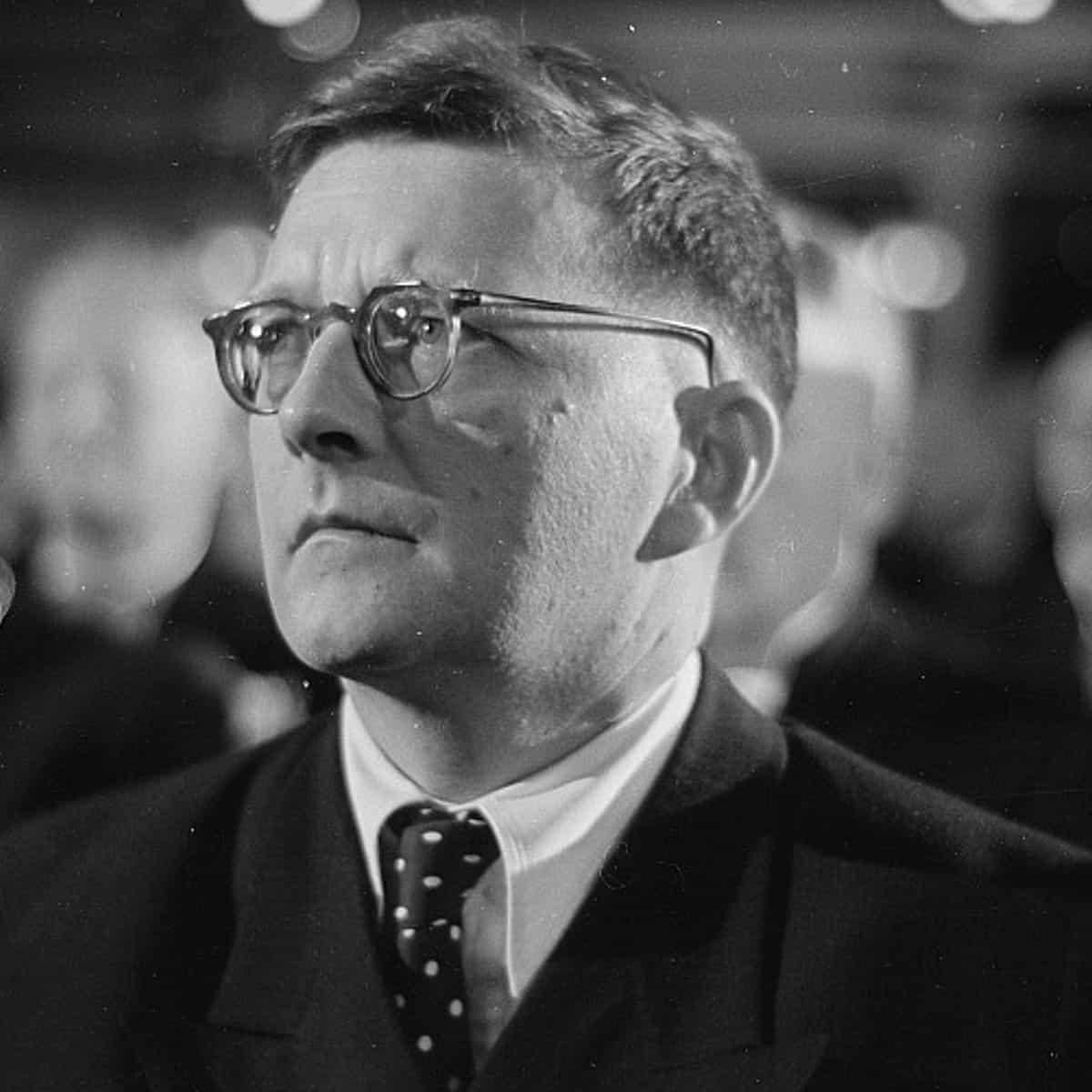
The Third String Quartet was Shostakovich’s only composition during the year 1946. He dedicated it to the members of the Beethoven Quartet, who gave the first performance in Moscow on their namesake’s 176th birthday, December 16, 1946. The mention of Beethoven is apt, for many observers have felt that this quartet, particularly in its heartfelt fourth movement, consciously evokes the spirit of the older master. Yet the Third String Quartet is no imitation.
There is evidence that this quartet may have had a program related to the just-concluded war. Shostakovich’s original titles for the five movements of this quartet were Calm Awareness of the Future Cataclysm, Rumblings of Unrest and Anticipation, The Forces of War Unleashed, Homage to the Dead, and The Eternal Question–Why? And for What? Those titles suggest a program for this quartet very similar to the “Leningrad” Symphony of 1941 and a five-movement structure similar to the Eighth Symphony of 1943, which—like this quartet– included a “battle” movement, a passacaglia-like movement, and a quiet ending. Yet Shostakovich suppressed those titles and any hint of a program about the war, choosing instead to publish the quartet with only tempo markings for the movements.
Preview on Spotify:
The writing in this quartet is often quite demanding for the players. Much of it is set in the instruments’ higher registers, and there are moments of soloistic brilliance that seem at odds with the ensemble playing expected in quartets. In addition, the harmonic language can be gritty—each movement has a key signature and a home key, but the continuously chromatic writing obscures a clear sense of tonality.
All this makes the Third Quartet sound forbidding, which it is not. But this is quite varied music, and listeners should come to it ready for the broad range of expression that marks Shostakovich’s best music. The very beginning of the opening Allegretto is frankly playful. The first violin’s skittering main idea dances gracefully, but Shostakovich stresses to all four players that he wants this beginning dolce. By contrast, the second subject is somber, moving darkly on its two-note cadence, and from the collision of these two ideas Shostakovich builds this sonata-form movement.
Shostakovich Saturday Morning Series
4 Saturdays at 10am
1/21, 2/4, 3/4 and 5/13, 2017
Herbst Theatre
$55/$45/$30
TICKETS
FEBRUARY 4:
Quartet No. 3 in F Major, Op. 73
Quartet No. 4 in D Major, Op. 83
MARCH 4:
Quartet No. 5 in B-flat Major, Op. 92
Quartet No. 6 in G Major, Op. 101
MAY 13:
with Roger Woodward, piano
Piano Quintet in G minor, Op. 57
Quartet No. 7 in F-sharp minor, Op. 108
A pounding 3/4 pulse continues virtually throughout the Moderato con moto. There are moments when this 3/4 meter verges on a ghostly, frozen waltz, only to be straitjacketed back into rigidity; the movement fades into silence with all the instruments muted. By contrast, the Allegro non troppo explodes to life with what sound like gunshots. Built on alternating measures of 2/4 and 3/4, this scherzo—a first cousin of the “battle” movement of the Eighth Symphony, which had been inspired by newsreels of tank battles— rushes to a sudden close.
The expressive Adagio has reminded many of Beethoven’s late quartets. It opens with a powerful five-measure phrase that will function (somewhat) like the ground bass of a passacaglia, providing the foundation over which Shostakovich will spin out long spans of intense and moving melody. This proceeds without pause into the finale, which might have been a lighthearted conclusion, were the main idea not so spooky: the cello’s dark, sinuous main theme is accompanied by the viola’s pizzicato harmonics. As this movement dances along, Shostakovich gradually brings back themes from the earlier movements, and the quartet fades enigmatically into silence on a final chord marked morendo.
—Notes by Eric Bromberger
